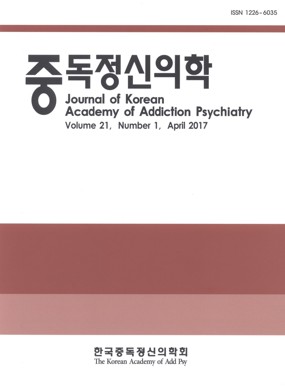- 영문명
- Neuroimaging Studies in Psychostimulant Abusers
- 발행기관
- 한국중독정신의학회
- 저자명
- 류인균(In-Kyoon Lyoo) 심민영(Min-Young Sim) 이지영(Jee-Young Rhee)
- 간행물 정보
- 『중독정신의학』Vol.9, No.2, 79~82쪽, 전체 4쪽
- 주제분류
- 의약학 > 정신과학
- 파일형태
- 발행일자
- 2005.09.30

국문 초록
영문 초록
Methamphetamine (MA) and cocaine are representative psychostimulants which have a common characteristic of direct amplification of dopamine concentration at the mesolimbic dopaminergic receptor. Since mesolimbic pathway, including the amygdale and the nucleus a ccumbens, is known to be related to reward and craving, deficits of the mesolimbic pathway have been implicated in drug addiction. Recently, functional brain imaging studies using PET, SPECT, and MRS and structural brain imaging studies including VBM/optimized VBM and DTI has been conducted in MA and cocaine abusers. It has been consistently suggested that there were functional and structural deficits of the mesocortical pathway including orbitofrontal cortex and anterior cingulate cortex in MA and cocaine abusers. These deficits may be partially recovered through long term abstinence. Consequently, functional and structural abnormalities in the mesocortical pathway as well as the mesolimbic pathway may be the underlying mechanism of psychostimulant addiction. Since the mesocortical pathway is implicated in craving, compulsive drug administration, and inhibition dyscontrol, we should be aware that these behavioral and neuropsychological characteristics could be based on organic brain deficits. We could also make full use of this understanding for treatment and rehabilitation to prevent frequent relapse of drug administration.
목차
해당간행물 수록 논문
참고문헌
최근 이용한 논문
교보eBook 첫 방문을 환영 합니다!

신규가입 혜택 지급이 완료 되었습니다.
바로 사용 가능한 교보e캐시 1,000원 (유효기간 7일)
지금 바로 교보eBook의 다양한 콘텐츠를 이용해 보세요!




